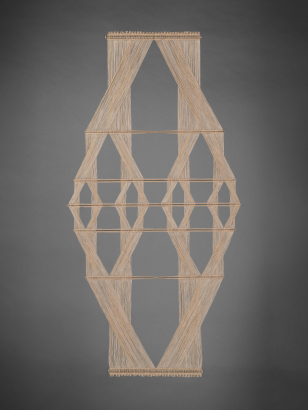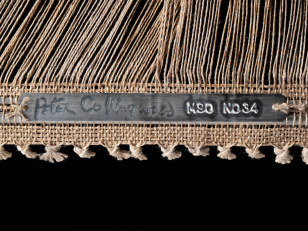Collingwood Peter
Biography
Collingwood was described as the pre-eminent British artist weaver on his death in 2008; his technical and aesthetic innovations been appreciated across the globe.
His first 'Macrogauze' was created in 1964, combining steel & brass with linen threadwork. This first 'Macrogauze' generated an ongoing oeuvre in both 2D & 3D based around mathematical sequences.
'Macrogauze 1 was exhibited in the V&A's touring exhibition 'Weaving for Walls' between 1965 and 1967, a show that took a determined fine art angle moving away from Collingwoods previous industrial works, a clear response to his earliest teacher, Ethel Mairet.
Collingwood's work has been widely exhibited; the best known being 'Coper/Collingwood' at the V&A in 1969. Here his 'Marcogauzes' were shown alongside his fellow 'handworker' (c. Tanya Harrod "The Crafts in Britain in the Twentieth Century" Yale University Press) Hans Coper - Harrod describes their "pots and weavings....as (having) a coolly rational look and developed formal ideas in elegant sequences."
Collingwood wrote five highly influential books of which the first, Techniques of Rug Weaving (1968), is probably the best known and his personal favourite. He was awarded the OBE in 1974.
Born in 1922 in Marylebone, London. He began his career as a doctor but soon found himself in national service in the Royal Army medical Corps. He then had a stint with Red Cross in Jordan but soon returned to Britain to continue his passion for weaving. Peter spent six months at Ditchling, East Sussex in the workshops of Ethel Mairet and then worked for the prominent weavers, Barbara Sawyer and Alastair Morton. In 1952 he set up a workshop in Archway, north London where he built his own equipment. Later in his career he experimented with shaft switching, for which he adapted the loom for his designs.

